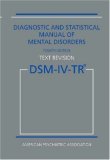Life is full of a variety of stressors, such as changing jobs, the end of a significant relationship, illness, and many different types of losses (e.g. a job loss or death of someone close to you). While most people are able to draw upon their coping skills to adapt and move on, some people are unable to adjust. They exhibit changes in behavior, emotions, or mood that may last for a few weeks or a few months. This type of stress reaction is called an adjustment disorder. When you have an adjustment disorder, the symptoms must appear within 3 months of the stressful event. Any type of stress can trigger an adjustment disorder, such as:
-
Divorce or other relationship break-up
-
An accident
-
A significant loss (including the death of a loved one)
-
A serious medical diagnosis.
-
Any major life transition or change (e.g. marriage, having a baby, retirement, changing schools, or starting a new job). Living through or being impacted by a disaster, such as a flood or tornado.
-
Sometimes an adjustment disorder develops due to a combination or series of stressors, or an ongoing stressor.
Typically, the symptoms of an adjustment disorder subside within 6 months after the stressful event occurred (acute), or after any consequences of the stressor (e.g. the effects of an illness or injury) have subsided. The exception to this is when the stressor is chronic or has ongoing consequences (e.g. financial problems after a divorce or job loss), and results in symptoms that last for an extended period of time (chronic).
Types of Adjustment Disorders
The type of adjustment disorder is determined by the main symptoms that are present:
- Adjustment Disorder with Depressed Mood – the primary symptoms are typical of depression, such as depressed mood, a sense of hopelessness, loss of interest in things you once enjoyed, and frequent tearfulness.
- Adjustment Disorder with Anxiety – the primary symptoms may include excessive or frequent worry, feeling on edge or nervous, and restlessness.
- Adjustment Disorder with Mixed Anxiety and Depressed Mood – as the name suggests, symptoms of both anxiety and depression are present.
- Adjustment Disorder with Disturbance of Conduct – this type is diagnosed when the primary symptoms involve acting-out behaviors that are age-inappropriate or violate the rights of others (e.g. getting into fights, vandalizing property, or skipping school or work).
- Adjustment Disorder with Mixed Disturbance of Emotions and Conduct – this type is diagnosed when the symptoms are both emotional (e.g. feeling depressed) and behavioral (e.g. getting into fights).
- Unspecified Adjustment Disorder – this type is diagnosed when there is a clear stress reaction, but the symptoms don’t fit any of the above categories (e.g. social isolation or somatic complaints).
Diagnosis of Adjustment Disorders
Adjustment disorders are diagnosed by a medical or mental health professional. There are no specific lab tests or other types of tests. Rather, the diagnosis is usually made after a thorough interview of the patient and / or (particularly with children) interviewing parents, a spouse, or other close family members or friends. A physical examination may be conducted to rule out any underlying medical condition that may better account for the symptoms.
Differential Diagnosis
An adjustment disorder is only diagnosed if the symptoms don’t fit the criteria for another disorder (e.g. major depression) or don’t appear to be due to another disorder that was already present.
Although 2 other disorders – PTSD (posttraumatic stress disorder) and ASD (acute stress disorder) - are also triggered by a specific stressor, there are significant differences between these two anxiety disorders and an adjustment disorder. PTSD and ASD always involve a traumatic event that elicits intense fear and feelings of hopelessness. The subsequent symptoms must include dissociation, frequent reliving of the trauma, and notable avoidance. Unlike PTSD and ASD, an adjustment disorder can be (and usually is) triggered by a stressor that isn’t necessarily extreme or traumatic.
An adjustment disorder should also not be confused with bereavement. Bereavement is a normal grief response to the death of a loved one. However, if the response to the death is excessive or lasts longer than would be considered normal, then an adjustment disorder diagnosis or other diagnosis (for example, major depressive disorder) may be appropriate.
Treatment for Adjustment Disorders
The treatment for an adjustment disorder typically involves psychotherapy, but may also include medication if symptoms of anxiety or depression are present and severe enough to warrant it. While medication can relieve symptoms temporarily, it is generally not as effective as psychotherapy.
Psychotherapy
While many types of psychotherapy can be helpful in the treatment of adjustment disorders, one of the most effective types is Cognitive Behavioral Therapy. This particular therapy focuses on identifying and changing the maladaptive and irrational beliefs and thought patterns that often play a major role in adjustment disorders.
Medication
Medication may be prescribed to help alleviate specific symptoms of an adjustment disorder. For example, an antidepressant such as an SSRI (selective serotonin reuptake inhibitor, such as Prozac or Paxil), may be prescribed if depressed mood or anxiety are present. A benzodiazepine (e.g. Klonopin or Xanax) may be prescribed for a brief period if significant anxiety symptoms are present. Other medications may also be prescribed depending on the specific symptoms.
|


